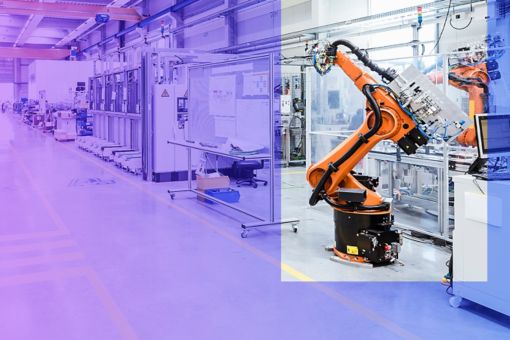The digital transformation has fundamentally changed the business environment of companies. They are faced with the task of manufacturing ever more complex products, developing more efficient processes and optimising the customer experience. This requires the use of innovative technologies. One technology that has become increasingly important in recent years is the digital twin. This allows existing technologies to be used systematically and the added value that digitalisation can offer to be maximised.
What is a Digital Twin?
A digital twin is a virtual replica of a physical product, process or system. It enables companies to simulate and analyse real objects or processes in a virtual environment. This opens up a wide range of opportunities to improve product development, operational processes, maintenance and ultimately to increase overall efficiency. A digital twin can play a transformative role in your company and help you to open up new opportunities for value creation.
Ingo Haugwitz
Director, Consulting
KPMG AG Wirtschaftsprüfungsgesellschaft
Possible applications and examples
Digital twins can be used in all industries and for many processes. They are already being used successfully in the manufacturing and automotive industries in particular, as well as in the aviation and energy sectors. The growth that is expected in these and other industries in the coming years emphasises the added value that a digital twin can create.
In the following examples of the use of a digital twin, we essentially differentiate between digital twins for product or production optimisation and those for performance enhancement.
- In the automotive industry, the digital twin for products and production can be used to create a virtual simulation of vehicles and their components. This allows design and production processes to be organised more efficiently. The performance twin supports the monitoring of vehicle performance and wear and tear and can therefore indicate risks at an early stage and support maintenance.
- In healthcare, a digital product and production twin can transmit real-time data on the health status of patients and virtually simulate treatment options. The performance twin can be used to improve diagnoses and treatments for patients and to monitor and optimise medical devices and systems.
- By using a digital twin in the energy supply sector, power grids and energy storage systems can be visualised virtually. On the performance side, renewable energy sources can be monitored to ensure sustainability.
Advantages
The use of digital twins brings both qualitative and quantitative benefits along the entire life cycle of products, systems and processes. The technology offers numerous opportunities for companies looking for sustainable growth and competitive advantages.
1. Qualitative Advantages:
- Reduced costs in product development: With a digital twin, companies can simulate and test products in a virtual environment before they are physically created. This allows design errors to be recognised and rectified at an early stage, resulting in significant cost savings compared to expensive prototyping.
- Higher customer satisfaction through faster implementation of customer requirements: A digital twin makes it possible to test changes to products or processes in an agile manner and make adjustments quickly. This significantly shortens the time between identifying new requirements and implementing solutions, allowing companies to respond to new customer requirements and market trends much faster than before.
- New revenue streams: A digital twin opens up new business opportunities, particularly in the area of remote maintenance and support. By continuously monitoring and analysing products in real time, companies can identify maintenance requirements and proactively provide remote maintenance and support services. This increases customer satisfaction and leads to recurring revenue from services.
- "As-a-Service" business models: The provision of products as services ("As-a-Service") is on the rise. The basis for such business models is the digital twin, as it makes it possible to monitor the condition and performance of the products provided in real time. This facilitates billing according to usage and supports the implementation of flexible pricing models.
2. Quantitative Advantages:
- Increasing relevance of the technology: The importance of the digital twin for tapping into new business opportunities is growing. The potential of the technology can also be expressed in figures: estimates assume that the turnover generated through the use of digital twins could amount to around 30 billion euros across all industries and worldwide by 2025.
- Increase in turnover: Optimising products and processes with the help of a digital twin has a direct impact on turnover. It is estimated that manufacturing companies in particular can increase their turnover by up to 10 per cent by implementing this technology.
- Shortening time to market: With the help of digital twins, companies can shorten time to market by up to 50 per cent. The ability to develop, test and optimise products virtually before they are physically produced speeds up the entire development process.
- Improving product quality: The combination of virtual simulation and analysis in a digital twin allows companies to further improve their product quality - it is estimated that product quality can be increased by up to 25 per cent.
Our Services
There are a number of prerequisites for the successful introduction of digital twins. Processes should be digitalised as far as possible and the IT systems should be highly interoperable. Good data quality is particularly important in order to obtain meaningful results.
The KPMG procedure model for implementing a digital twin offers you a structured and proven approach based on the target operating model. From the analysis of requirements and the selection of suitable technologies through to implementation and continuous optimisation, the model helps you to derive the full benefit from the digital twin.
In addition to processes, people and technologies, our target operating model also includes the service delivery model, data and reporting as well as governance. This enables you to realise your project to introduce a digital twin effectively and efficiently in order to become even better in your business area and open up new areas of business.





